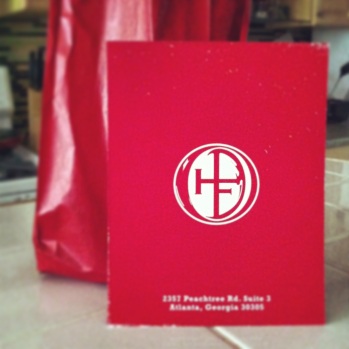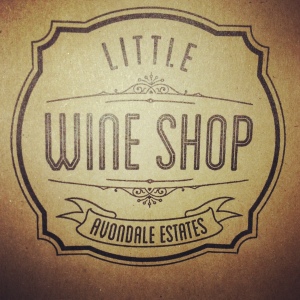Tagged: france
No. 2
 2011 Château l’Oiselinière de la Ramèe
2011 Château l’Oiselinière de la Ramèe
Muscadet Sèvre et Maine, France
Occasionally–I discovered in the midst of my second week of winebbling–walking into wine shops as a twenty-something snoobie can be something like this (please click hyperlink and listen to receive the full effect of this post).
At first, you stand at the doorway of a brand new wineventure. Young. Fresh. Broke. With not a care in the world and not a penny to your name. You’ve got style though–in that I don’t care how uncool I am to the point of actually becoming too cool sort of way.
And then, the perfect moment greets you at the threshold of purchase and peruse. You, winebbler, are certain–beyond any measure of a doubt–that you will leave this place happy as a clam. Directly resulting from an encounter with the gaping and mysterious vats of knowledge made available to you by the woman behind the counter. But, this moment is fleeting my friends. (Stop music here).
And, reality sinks in. Hence, the second realization intrudes upon a brief detour past Rosé and the safety nets of Argentinian Malbec. All the things that could have happened in there aren’t happening, and you really are just some poor kid trying to move up in a world that has no more room at the inn. Just ask China.
That jazzy theme music playing in your head is now abruptly revealed as the show-boat it truly was. And any ideation of impending glory is crashing down like an old familiar Thursday afternoon where you left that (would be) enchanting person who works on floor six in an elevator as the music traveled down and down with the closing cold metal doors. In such a space–there is no hope. Only the bitter truth that being in a wine shop can be really damn boring.
Sans the knowledge I sought and sans $16.20, I left H&F bottle shop in the Buckhead neighborhood of Atlanta with a metaphorical empty-handed purchase–to no fault of the wine selling lady. Only my own pitiful attempt to appear to understand her jargon is to blame. For speaking wine speak is a tough game to play–and can oft times turn the biggest of fish into the tiniest of guppies and make the nosiest of bloggers forget all of the right questions.
Alas, home I went with the first bottle recommended to me: a 2011 Château l’Oiselinière de la Ramèe in a little red bag twisted at the top. Worried of what I was getting into at two in the afternoon, I uncorked (and nearly broke) the Muscadet wine which hails from the confluence of the rivers Sévre and Maine in the northwest of France. This wine is crafted by the Chéreau family–who apparently has privy to a house amazing enough to receive the nomenclature of Château and the ability to consume their wine on a hilltop overlooking the banks of a rather (I can only imagine) picturesque riverside. Lucky bastards.
The head guy in charge of the whole Château enterprise is named Bernard Chéreau. This seemingly benign French gentleman possess a tinge of badass as he spearheaded the creation of an export market. Merci beaucoup monsieur from all of us wanna-be winos over here in ‘Merica.
The wine hails from Appellation Muscadet Sèvre et Maine Contrôlèe and boasts the seal of French legitimacy (and stuck-up-edtry (kidding!)) that we learned of last week. Evidently, the family is highly loyal to the Melon de Bourgogne varietal from the Loire Valley region and is also highly partial to Muscadet grapes. Basically, this just means that they stick with what they love and keep it simple. Makes sense.
The cool (and kind of gross) thing about this wine is that it goes through a special process known as Sur Lie. Basically, this just means that the newly created wine ferments ( the process of turning sugar into ethanol) on top of dead yeast for an entire miserable winter. Apparently, this makes it “enriched and full-bodied” (whatever the hell that means). To me, the idea of drinking something that has laid soaking in dead anything is mildly repulsive. I try not to think about it too much as the sparkly taste is still quite dazzling.
Well, gang, let’s get down to business.
1. Look:
Pale straw-yellow–a bit like the sunshine I am currently missing.
2. Smell:
Floral, fruity, and fresh. Did I mention longings for summer? While refreshing, it did accidentally invoke the overhanging fear of being a sweet wine–a thing I loathe more than Lindsay Lohan on a Friday night. Die, Arbor Mist.
3. Taste:
The beginning: Smooth and foreshadowing of surprises to come. (So Robert Parker right now.)
The middle: Apple and citrus. Oh! It bursts like spring and has just the slightest bit of…salt? Perhaps?
The end: Made me want another sip–and I am usually not a white wine drinker. But this tingles and sparks like pop rocks.
The verdict: For all those Februaries that made me want June back, I’ll take it as a worthy fill-in. This wine is well worth the freshness it brought to rainy gray winter days this past week. Thanks H&F for recommending a bit of fun, after all.
Bisous,
C.
xx
No. 1
 2010 Clos La Coutale
2010 Clos La Coutale
Cahors, France
Week One. A Saturday evening–slightly before closing–my trusty roommate agreed to wander into the Little Wine Shop in Decatur, GA.
We walked into a space no larger than my living room and were met by a man skipping down the stairs.
About mid-skip and stair, he asked if I needed help.
Me: Well. I’m doing a little “project.” I know nothing about wine and after a flight home where I was forced to face myself for a bit, I decided it was time to learn.
Him: Laughing.
Me: I know. This is strange. But, I have some parameters. It has to be under and $20 and it has to have a high rating. (Rookie mistake #1).
Him: Hm. (Scoffing–yet still cordial) Points. They don’t matter. See…
He proceeded to explain that (disclaimer: these are my words, not his) a guy named Robert Parker had created said points for losers like me who had previously invested in the idea that we could just find “good” wine using a number system and a pretentious older man’s manufactured critical taste. And because he rose to a place of such elitist wine snobbery–a cheap ass wine for $8 had the potential to become the next big thing at $80 within the next vintage (that’s wine talk for year).
Being the naturally intelligent beings they are, Vintners (that’s wine talk for the people who make wine and also sell it) caught on to this. Thereby selling their souls and their tastebuds to craft wine that would appease the palate of the self-made wine god Sir Robert Parker.
Eventually though, (lucky for us) the hipster and punk-rocking vintners decided to stick it the man and make their own damn wine, whether Robert Parker liked it or not. And priced it properly to boot.
This all goes to say, that I ended up with a bottle of wine imported by a guy named Kermit Lynch who–as the son of a non-wine drinking preacher family–imports wine, writes, and produces alternative albums with titles like “Donuts and Coffee” and “Kitty Fur.” I think I like him.
The bottle suggested to me by Little Wine Shop is not ranked higher than any other wine I might have naively pluck off the shelf for less than $20, but I walked away satisfied that I was starting off on the right foot. On top of that, the wine-guy at Little Wine shop made a small victory for those idiosyncratic nonconformist ragers against the egoists in the wine machine. Bitches.
I was given a bottle of 2010 Clos La Coutale, which originates from a place in the south west of France called Cahors. In the wine world, you would say the appellation of the wine is Appellation d’origine Protégée. Apparently, it used to be called Appellation d’origine Contrôlée. But, a law was passed in 2009, that some vintners had to switch over to use the word Protégée instead. People were sort of pissed about this. Anyway, that just means that where the hell they got their grapes from is a legitimate grape-growing place, according to the French government. So woohoo for Cahors.
Cahors is a really old region of France complete with a satanic bridge and an ancient reputation for producing some pretty magical grapes.
The bottle of Clos Las Coutale is made of 20% Merlot and 80% Malbec–both grapes originating from that region. That’s right, Argentina, France made Malbec first–you thieving wannabes. Kidding, you guys (sort of). But the blend, much to my delight, made my usual Argentinean go-to wine taste ordinary in comparison. There are a few steps to taste wine appropriately (according to my google searches). So for all of my fellow snoobs (newby snobs) out there, here is the general break down:
1. Look: Apparently you hold your glass up to the light, preferably against a white background and describe what it looks like. My glass of Malbec/Merlot–Malblot we can nickname it (Robert Parker is dying slowly somewhere right now)–looks really dark purple in the middle and has a bit of a red tinge on the outside. Because it hails from 2010, it is not going be as orange around the rim as it may have been if it were a bit older.
2. Smell: Alcoholic. Just kidding. You have to swirl your glass around for about 10 seconds, you fool. It smells a bit earthy and definitely flowery.
3. Taste: Begin at the beginning (swish it around), go through the middle (pause to think), and notice the end (swallow and judge the aftermath).
The Beginning: Definitely soft at the beginning.
The middle: Tangy and fruity in the middle.
The end: Bitter and warm.
The verdict of a novice wine drinker: At $17.99 a bottle, I wouldn’t pick it up to drink alone on a rainy Tuesday night on the couch. But for a hot date or for cooking a meal with friends that is a bit on the heavier side–most definitely. Overall, a yummy glass of wine for less than $20. Blown out of the park? Not entirely. Try it again? Absolutely.
That’s all folks. Next week, we shall venture into the land of the whites. Thanks Little Wine Shop for helping me out!
Bis.,
C.